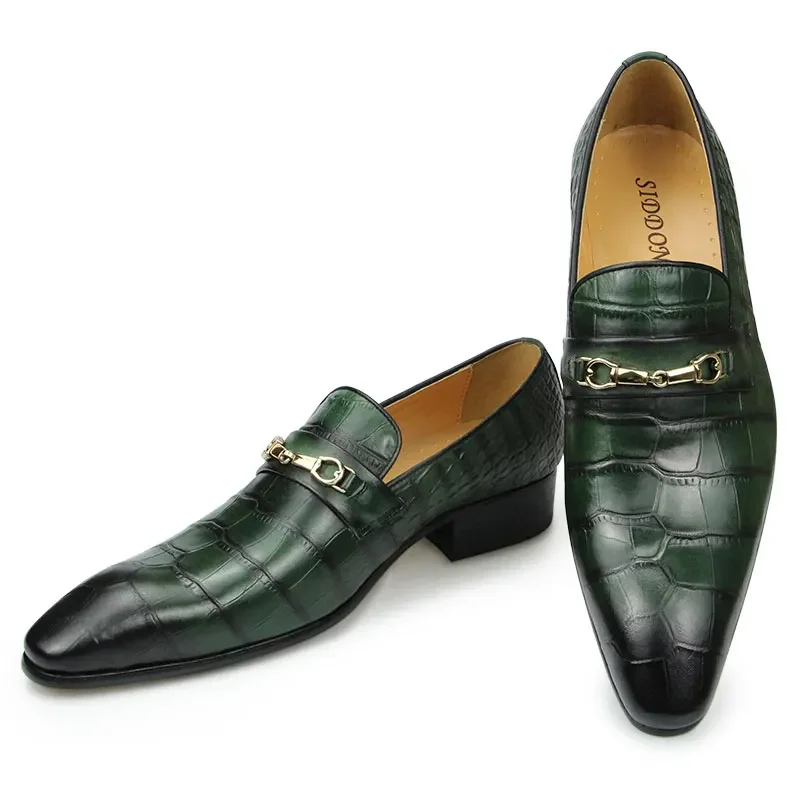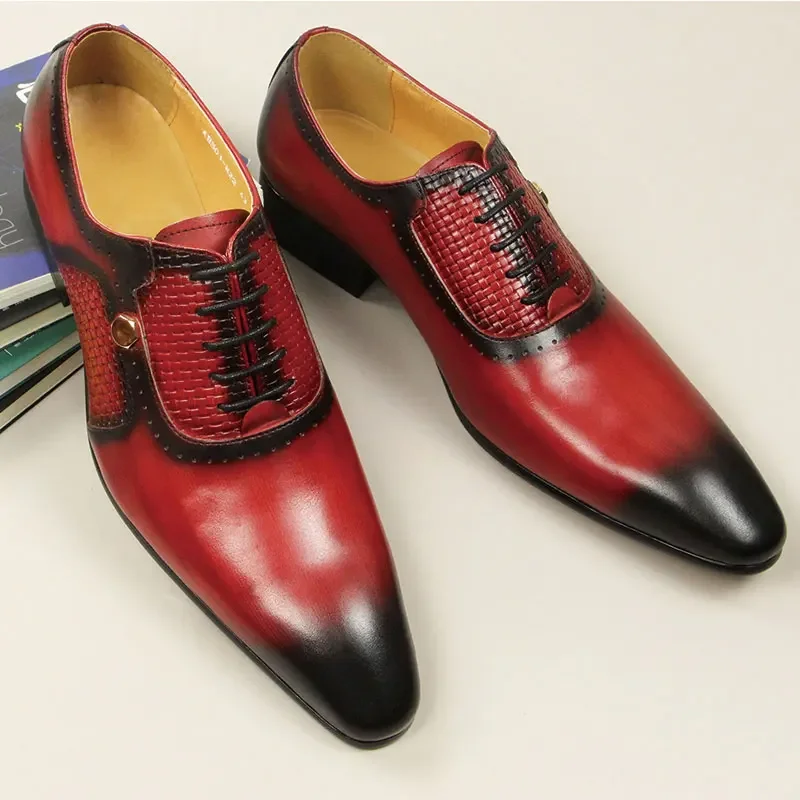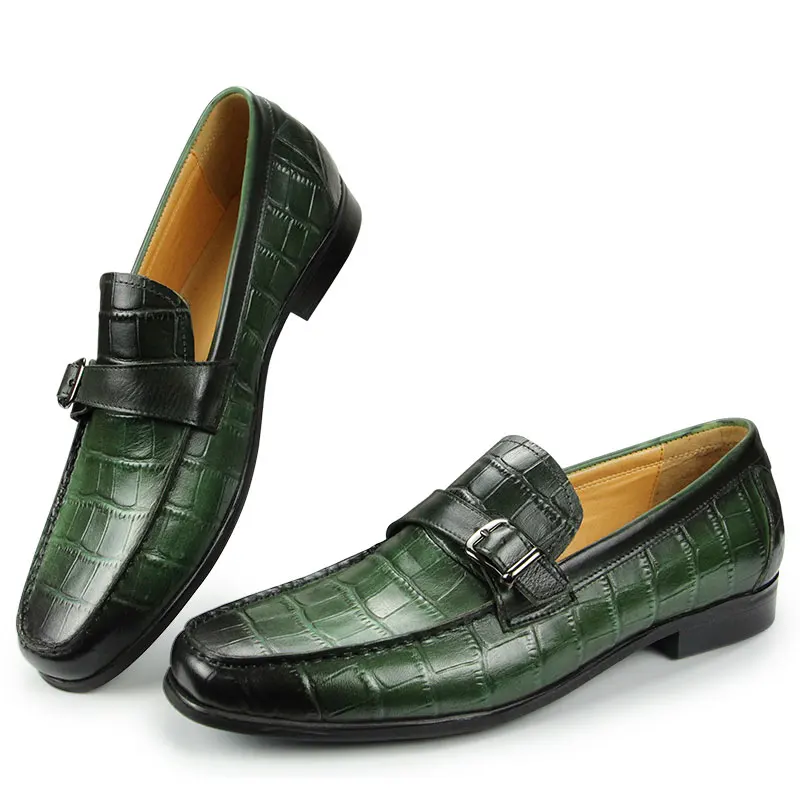Introduction to Custom Leather Shoes
The allure of custom leather shoes lies in their unmatched quality, personalization, and craftsmanship. These bespoke items are more than just footwear; they are a statement of style, elegance, and individuality. Custom shoes offer numerous benefits, from perfect fit and superior comfort to unique designs crafted specifically for you. This comprehensive guide explores everything you need to know about shoes, including their history, the making process, key features, benefits, and how to care for them.

Why Choose Custom Leather Shoes?
Opting for custom leather shoes comes with several advantages. First, they offer a perfect fit. Unlike mass-produced shoes, custom leather shoes are designed to match the exact measurements of your feet, ensuring unparalleled comfort. Second, these shoes provide superior quality. The materials and craftsmanship involved in making shoes far exceed those of factory-made pairs. Finally, shoes are unique. You have the freedom to choose every aspect of the design, from the type of leather and color to the stitching and sole. Investing in shoes means choosing footwear that combines comfort, quality, and individuality.
The History and Evolution of Leather Shoes
Understanding the history and evolution of leather shoes gives you a deeper appreciation for their craftsmanship and timeless appeal. Leather shoes have been a symbol of status and sophistication for centuries.
Ancient Beginnings
Leather shoes date back to ancient civilizations, where they were first crafted for protection and comfort. Archaeological evidence shows that early humans used leather to create rudimentary footwear. The materials were selected for their durability and flexibility, making them ideal for harsh environments.
Middle Ages to Renaissance
During the Middle Ages, leather shoes became more than just functional items. They started to symbolize social status and were often decorated with intricate designs and embellishments. The Renaissance period saw further advancements, with artisans developing more refined techniques for tanning leather and constructing shoes.
19th and 20th Century
The 19th century marked a significant shift in the production of leather shoes. The Industrial Revolution introduced machinery that could mass-produce shoes more efficiently. However, custom leather shoes remained a luxury item, cherished for their craftsmanship and quality. The 20th century saw a resurgence in bespoke shoemaking, with artisans and luxury brands offering custom services to discerning clients.
Modern Innovations
Today, custom leather shoes blend traditional craftsmanship with modern technology. Advanced measuring techniques and digital modeling allow for even greater precision in fit and design. Custom shoemakers continue to push the boundaries of creativity and quality, ensuring that each pair is a unique masterpiece.
Increasing Popularity
The popularity of custom leather shoes has surged in recent years. Celebrities, influencers, and fashion enthusiasts often choose bespoke footwear for its unique appeal and superior comfort. High-profile endorsements and the growing appreciation for sustainable and ethical fashion contribute to their rising popularity.

The Making Process of Shoes
The process of creating shoes is intricate and involves several stages. Each step is crucial in ensuring that the final product is of the highest quality and fits perfectly.
Initial Consultation
The making process begins with an initial consultation. This is where the shoemaker gets to know your preferences, requirements, and lifestyle.
Discussing Preferences
During the consultation, you discuss your preferred style, type of leather, color, and any specific design elements you want. This is also an opportunity to explore different options and get expert advice on what would work best for you.
Measuring Your Feet
Accurate measurements are crucial for a perfect fit. The shoemaker takes detailed measurements of your feet, considering factors like arch height, width, and any asymmetries. This ensures that the custom leather shoes are tailored to your unique foot shape.
Design and Prototyping
Once the measurements and preferences are gathered, the shoemaker begins the design and prototyping phase.
Creating a Last
A “last” is a mold that represents the shape of your foot. The shoemaker creates a custom last based on your measurements. This mold is used throughout the shoemaking process to ensure a perfect fit.
Designing the Shoe
The shoemaker then creates a detailed design of the shoe, incorporating all your preferences and specifications. This design serves as the blueprint for the shoe, guiding every step of the construction process.
Selecting Materials
The choice of materials significantly impacts the quality and appearance of the shoes.
Choosing the Leather
The type of leather is one of the most important decisions. Options include full-grain leather, top-grain leather, and exotic leathers like ostrich or crocodile. Each type has its unique characteristics, affecting the shoe’s durability, appearance, and feel.
Additional Materials
Other materials, such as linings, insoles, and soles, are also selected based on your preferences and the shoe’s intended use. High-quality materials ensure the shoe is comfortable, durable, and aesthetically pleasing.
Construction Process
The construction process involves several stages, each requiring precision and skill.
Cutting and Shaping
The leather is carefully cut and shaped to match the design and fit the last. This stage requires a high level of craftsmanship to ensure accuracy and consistency.
Stitching and Assembly
The various parts of the shoe are stitched together using different techniques like Blake stitching or Goodyear welting. These methods provide durability and flexibility, ensuring the shoe is both sturdy and comfortable.
Finishing Touches
The final stage involves adding the finishing touches to the custom leather shoes.
Polishing and Buffing
The shoes are polished and buffed to bring out the natural beauty of the leather. This step also involves applying conditioners and protective coatings to enhance the leather’s durability and appearance.
Quality Control
Each shoe undergoes a thorough quality control process to ensure it meets the highest standards. Any imperfections are addressed, and the shoes are given a final inspection before they are deemed ready for delivery.
Key Features of Shoes
Custom leather shoes offer several key features that set them apart from mass-produced footwear. Understanding these features can help you appreciate the value of bespoke shoes.
Perfect Fit
The primary advantage of custom leather shoes is their perfect fit.
Personalized Measurements
Custom leather shoes are made based on detailed measurements of your feet. This ensures that the shoes fit like a glove, providing unparalleled comfort and support.

Superior Quality
The quality of materials and craftsmanship involved in making shoes is unmatched.
High-Quality Materials
Custom leather shoes are made from the finest materials available. Other materials, like linings and soles, are also of the highest quality.
Unique Design
Custom leather shoes are unique, reflecting your personal style and preferences.
Customization Options
You have the freedom to choose every aspect of the shoe’s design. From the type of leather and color to the stitching and sole, each element is customized to match your taste.
Enhanced Durability
The construction techniques used in making shoes ensure their longevity.
Skilled Craftsmanship
Custom leather shoes are crafted by skilled artisans who use traditional techniques to ensure durability and longevity. The attention to detail and precision in each step of the process ensure that the shoes are built to last.
Aesthetically Pleasing
Custom leather shoes are not just functional; they are also aesthetically pleasing.
Elegant Design
The elegant design and intricate details of custom leather shoes make them a work of art. The natural beauty of the leather, combined with the craftsmanship, results in a pair of shoes that looks as good as it feels.
Benefits of Custom Leather Shoes
Wearing shoes offers several benefits, from enhanced comfort and support to improved style and confidence.
Optimal Comfort
The perfect fit of shoes ensures optimal comfort.
Personalized Fit
Custom leather shoes are made to match the exact measurements of your feet. This personalized fit eliminates common issues like blisters, pinching, and discomfort, ensuring all-day comfort.
Superior Support
Custom leather shoes provide superior support, promoting foot health and overall well-being.
Arch Support and Cushioning
The personalized design of custom leather shoes ensures proper arch support and cushioning. This helps reduce strain on your feet and joints, promoting better posture and overall comfort.
Unique Style
Custom leather shoes reflect your personal style and preferences.
Personalized Design
The ability to customize every aspect of the shoe’s design ensures that your custom leather shoes are a unique expression of your style. This allows you to create a pair of shoes that perfectly complements your wardrobe.
Improved Confidence
Wearing custom leather shoes can significantly boost your confidence.
Perfect Fit and Appearance
The perfect fit and elegant design of custom leather shoes make you look and feel your best. This boosts your confidence and leaves a lasting impression.
How to Choose the Right Custom Leather Shoes
Choosing the right custom leather shoes involves considering your specific needs, preferences, and lifestyle. Several factors should guide your decision-making process.
Assessing Your Needs
Understanding your specific needs can help you choose the perfect custom leather shoes.
Intended Use
Consider the intended use of the shoes. Are they for formal occasions, everyday wear, or specialized activities? This will guide your choices regarding style, materials, and construction techniques.
Budget
Custom leather shoes are an investment. Consider your budget and determine how much you are willing to spend. Keep in mind that the quality and craftsmanship of custom shoes justify the cost.
Considering Style and Design
Your personal style plays a crucial role in selecting the right shoes.
Classic vs. Contemporary
Decide whether you prefer a classic or contemporary design. Classic styles offer timeless appeal, while contemporary designs allow for more creativity and innovation.
Customization Options
Explore different customization options. Choose the type of leather, color, stitching, and sole that match your taste and preferences. This ensures that the final product is a true reflection of your style.
Evaluating Quality and Craftsmanship
The quality and craftsmanship of custom leather shoes are crucial factors to consider.
Researching Artisans
Research the artisans or shoemakers you are considering. Look for reviews and testimonials from previous clients. This gives you an idea of their expertise and the quality of their work.
Examining Samples
If possible, examine samples of the shoemaker’s work. This allows you to assess the quality of the materials and craftsmanship firsthand.
Ensuring Proper Fit
The fit of the shoes is the most important aspect.
Accurate Measurements
Ensure that accurate measurements are taken. Any discrepancies can affect the fit and comfort of the shoes. A reputable shoemaker will take the time to measure your feet carefully and accurately.
Fitting Sessions
Caring for Custom Leather Shoes
Proper care and maintenance ensure the longevity and pristine appearance of your custom leather shoes. Follow these tips to keep your shoes in top condition.
Cleaning and Conditioning
Regular cleaning and conditioning keep the leather looking fresh and prevent damage.
Cleaning the Leather
Clean the leather with a damp cloth and mild soap. Avoid using harsh chemicals that can damage the material. Regular cleaning removes dirt and debris that can cause wear.
Conditioning the Leather
Condition the leather regularly with a high-quality leather conditioner. This keeps the leather supple and prevents cracks and dryness. Conditioning also enhances the leather’s natural beauty and shine.
Storing the Shoes
Proper storage helps maintain the shape and condition of yourshoes.
Shoe Trees
Use cedar shoe trees to maintain the shape of the shoes and absorb moisture. This prevents the leather from wrinkling and keeps the shoes looking their best.
Dust Bags
Store your custom leather shoes in dust bags to protect them from dust and damage. This also prevents the leather from fading or discoloring.
Polishing and Protection
Regular polishing and protection enhance the appearance and durability of your custom leather shoes.
Polishing the Shoes
Polish your shoes regularly with a high-quality shoe polish. This enhances the leather’s shine and adds a protective layer against moisture and dirt.
Waterproofing
Apply a waterproofing spray to protect the leather from water and stains.
Repair and Maintenance
Regular repair and maintenance ensure the longevity of your shoes.
Resoling
Resole your shoes when the soles show signs of wear. This prevents further damage and extends the life of your shoes.
Professional Repairs
For any major repairs, consult a professional cobbler. They have the expertise and tools to fix any issues without compromising the quality and appearance of your shoes.
Final Thoughts
Custom leather shoes offer a blend of comfort, quality, and individuality. Understanding the making process, key features, and benefits ensures you make an informed choice. Proper care and maintenance ensure longevity and pristine appearance. With continuous innovation, the future looks bright for this timeless footwear. Investing in shoes is investing in your style and confidence. Make a wise choice and enjoy the benefits of a high-quality, unique, and personalized pair of shoes. Elevate your look and embrace the elegance and craftsmanship of shoes.
